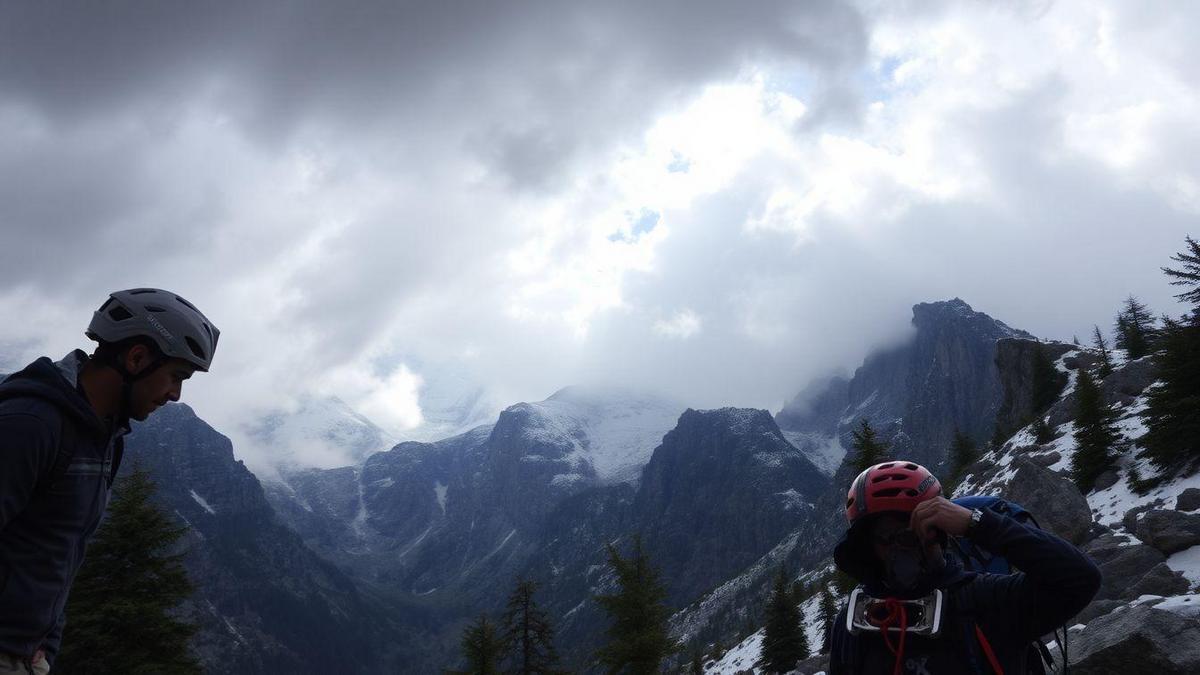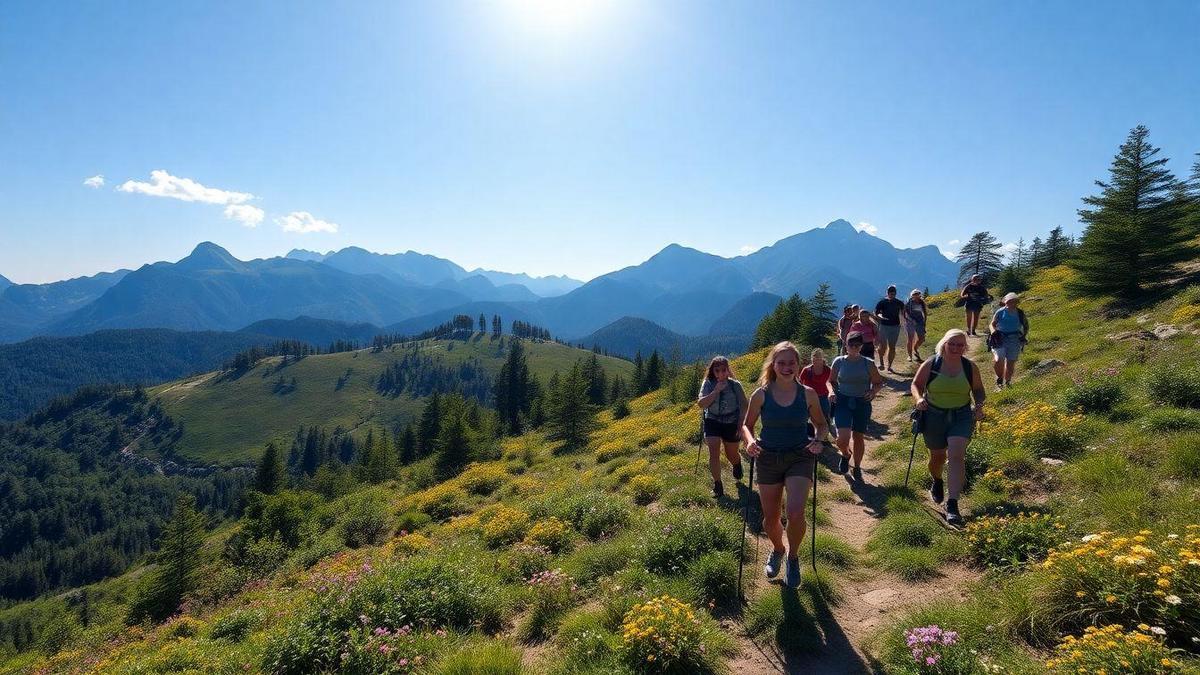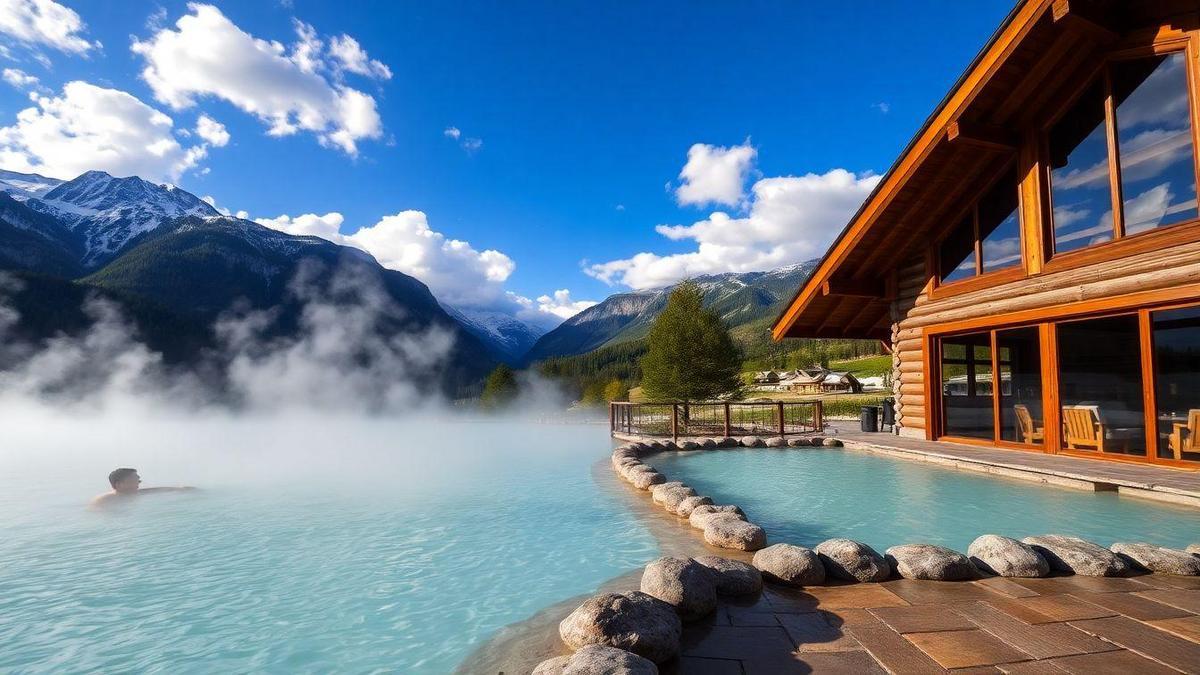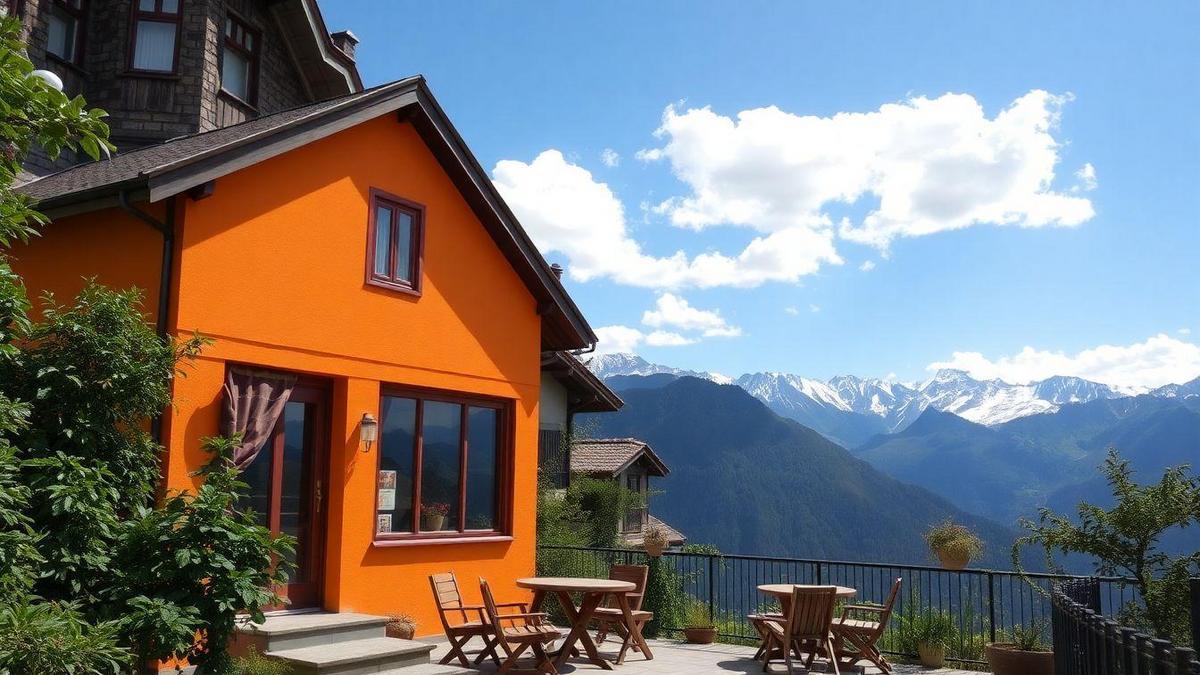
Understanding Weather Conditions That Impact Mountain Climbing Safety
Common Weather Hazards in Mountain Climbing
When you’re climbing a mountain, weather can be your best friend or your worst enemy. Some common weather hazards you might face include:
- High Winds: Strong winds can throw you off balance and make it tough to stay on your path.
- Rain: Wet conditions can lead to slippery rocks and trails, increasing your chances of falling.
- Snow and Ice: These can hide rocks and make the terrain much more dangerous.
- Thunderstorms: Lightning can strike quickly, especially in open areas.
How Weather Conditions Change Quickly in Mountains
Mountains have their own moods. One moment it could be sunny, and the next, you’re caught in a snowstorm. This can happen because:
- Elevation: As you climb, temperatures drop, and weather changes fast.
- Surrounding Terrain: Mountains can block winds and create different weather patterns.
- Time of Day: Afternoon storms are common, so it’s wise to start early.
Tips for Monitoring Mountain Weather Forecasts
Staying safe means keeping an eye on the weather. Here are some tips to help you stay informed:
| Tip | Description |
|---|---|
| Check Local Forecasts | Use apps or websites that focus on mountain weather. |
| Look for Alerts | Pay attention to warnings about storms or high winds. |
| Observe the Sky | If clouds start to gather, it might be time to turn back. |
| Talk to Locals | Experienced climbers can offer valuable insights. |
The Role of Temperature in Climbing Safety
How Cold Weather Affects Your Body
When you’re climbing a mountain, cold weather can be your worst enemy. As temperatures drop, your body loses heat faster than it can produce it. This can lead to hypothermia, a dangerous condition that occurs when your body temperature falls too low. You might start to feel shivery, tired, or confused. It’s like your body is sending out a distress signal.
To keep yourself safe, dress in layers. This way, you can adjust your clothing depending on how cold it gets. Here’s a quick list of what to wear:
- Base Layer: Moisture-wicking fabric to keep sweat away.
- Insulating Layer: Fleece or down to trap heat.
- Outer Layer: Waterproof and windproof to block out the elements.
Risks of Climbing in Extreme Heat
On the flip side, climbing in extreme heat can be just as risky. When the sun blazes down, you may sweat a lot, leading to dehydration. Your body can only handle so much heat before it starts to struggle. If you push too hard, you could face heat exhaustion or even heat stroke, which can be life-threatening.
It’s crucial to drink plenty of water and take breaks in the shade. Here’s a quick table to show how heat affects your body:
| Condition | Symptoms |
|---|---|
| Heat Exhaustion | Heavy sweating, weakness, nausea |
| Heat Stroke | High body temperature, confusion |
Recognizing Signs of Hypothermia and Heat Exhaustion
Knowing the signs of hypothermia and heat exhaustion can save your life. Here’s what to watch for:
Hypothermia Signs:
- Shivering
- Confusion
- Slurred speech
Heat Exhaustion Signs:
- Dizziness
- Rapid heartbeat
- Headache
If you notice these signs in yourself or a climbing buddy, it’s important to act fast. For hypothermia, get to a warm place and use blankets. For heat exhaustion, cool down with water and rest in a shady spot.
Wind and Its Effects on Mountain Climbing
How Strong Winds Can Increase Climbing Risks
When you’re climbing a mountain, strong winds can be a real game-changer. They can throw you off balance, making it tough to stay on your path. Imagine trying to walk straight while someone is pushing you from the side. That’s what high winds can feel like.
Wind can also create dangerous conditions. It can whip up loose rocks and debris, which might hit you or cause you to stumble. Plus, if you’re climbing a steep area, strong winds can make it feel even more intimidating. You might find yourself second-guessing your every step.
Strategies to Climb Safely in Windy Conditions
So, how can you tackle those gusty challenges? Here are some strategies to help you stay safe:
- Check the Weather: Before you head out, look at the weather forecast. If high winds are expected, it might be best to postpone your climb.
- Choose Your Route Wisely: Opt for trails that are more sheltered from the wind. Staying near the base of the mountain can help you avoid the worst gusts.
- Stay Low: If the winds pick up while you’re climbing, consider descending to a lower elevation where the winds may be less severe.
- Use Proper Gear: Invest in wind-resistant clothing. A good jacket can make a world of difference, keeping you warm and protected.
Understanding Wind Chill and Its Impact on Safety
Wind chill is another important factor to keep in mind. It’s not just about the temperature; the wind can make it feel much colder than it actually is. Here’s a quick look at how wind chill can affect you:
| Wind Speed (mph) | Temperature (°F) | Feels Like (°F) |
|---|---|---|
| 0 | 30 | 30 |
| 10 | 30 | 23 |
| 20 | 30 | 16 |
| 30 | 30 | 10 |
As you can see, as the wind speed increases, the temperature can feel much colder. This can lead to frostbite or hypothermia if you’re not careful. Always keep an eye on how the wind might change your climbing experience.
Precipitation and Climbing Safety
The Dangers of Rain and Snow While Climbing
Climbing a mountain can be thrilling, but rain and snow can turn your adventure into a risky situation. When it rains, trails can become slippery and muddy. You might lose your footing, and that can lead to falls. Snow can hide rocks and other hazards. It can also make it hard to see where you’re going.
Imagine climbing up a steep path, and suddenly, the sky opens up. The rain pours down, soaking you to the bone. Your hands get slippery, and your boots lose grip. Snow can cover the trail, making it hard to know if you’re still on the right path. These weather conditions can lead to hypothermia or frostbite, which are serious dangers.
How to Prepare for Wet and Icy Conditions
Preparing for wet and icy conditions is key to staying safe. Before you head out, check the weather forecast. If rain or snow is on the way, it might be best to postpone your climb. But if you decide to go, here are some tips to keep in mind:
- Dress in layers: This helps you stay warm and dry. If you get too hot, you can take off a layer.
- Choose the right shoes: Waterproof boots with good traction are essential.
- Know your limits: If the weather turns bad, don’t hesitate to turn back.
Essential Gear for Wet Weather Climbing
Having the right gear can make all the difference. Here’s a table of essential items you should consider taking with you:
| Gear Item | Purpose |
|---|---|
| Waterproof jacket | Keeps you dry from rain and snow |
| Insulated gloves | Protects your hands from cold and wet |
| Gaiters | Prevents water from getting into your boots |
| Trekking poles | Helps maintain balance on slippery paths |
| Waterproof backpack | Keeps your gear dry |
Packing these items can help you face the elements with confidence. Remember, being prepared is half the battle when climbing in any weather.
The Importance of Climbing Season Weather
Best Seasons for Safe Mountain Climbing
When you think about climbing a mountain, weather is one of the first things that should come to mind. The best seasons for climbing often depend on the mountain you choose. Generally, spring and summer are the safest times to climb. During these months, the weather is usually milder, and the chances of snowstorms or heavy rain are lower.
Here’s a quick look at what to expect in different seasons:
| Season | Weather Conditions | Climbing Safety |
|---|---|---|
| Spring | Warmer, melting snow | Good |
| Summer | Warm, stable weather | Best |
| Fall | Cooler, unpredictable | Fair |
| Winter | Cold, heavy snow | Risky |
How Seasonal Changes Affect Weather Conditions
The seasons bring different weather patterns. For example, summer can be hot and dry, but sudden storms can pop up. In the fall, temperatures drop, and rain becomes more common. Winter can be beautiful, but the cold can be harsh. Each season has its own challenges and rewards.
Understanding these changes is vital. For instance, if you plan to climb in the summer, it’s wise to check the forecast regularly. Storms can roll in quickly, so being aware can keep you safe.
Planning Your Climb Around Weather Patterns
Planning your climb means keeping an eye on the weather. It’s like putting together a puzzle. You want all the pieces to fit just right. Here are some tips to help you plan:
- Check the forecast: Look for updates a few days before your climb.
- Know the mountain: Research how weather changes on that specific mountain.
- Be flexible: If the forecast looks bad, consider rescheduling.
By planning carefully, you can avoid nasty surprises and enjoy your climb. Remember, safety is key!
Assessing Risks Related to Weather Conditions
How to Perform a Climbing Risk Assessment
Before you hit the trail, it’s crucial to gauge the weather. A good risk assessment starts with checking local forecasts. Look for:
- Temperature: Is it too hot or too cold?
- Precipitation: Will it rain or snow?
- Wind Speed: Are gusts strong enough to affect your climb?
Next, think about your climbing route. Some paths are more exposed than others. If the forecast looks rough, consider whether you can change your route or postpone your climb.
Key Safety Precautions for Different Weather Scenarios
Weather can change on a dime. Here’s a quick guide to help you stay safe:
| Weather Condition | Precautionary Action |
|---|---|
| Sunny | Stay hydrated and wear sunscreen. |
| Rainy | Use waterproof gear and avoid slippery rocks. |
| Snowy | Wear insulated clothing and check avalanche risks. |
| Windy | Avoid high ridges and secure your gear. |
Always pack extra layers, a first-aid kit, and a reliable means of communication. These can be lifesavers if things go south.
Making Smart Decisions Based on Weather Conditions
When you’re out there, keep an eye on the sky. If clouds roll in or the wind picks up, it might be time to rethink your climb. Trust your gut. If you feel uneasy, it’s better to turn back than to push through.
For example, imagine you’re halfway up a mountain when a storm hits. You might think, I can make it! But the truth is, safety comes first. Remember, mountains will always be there, but your safety is paramount.
Frequently Asked Questions
How do rain and snow affect mountain climbing safety?
Rain and snow can make trails slippery. They can hide rocks and holes. You need to be extra careful while climbing.
What temperature is safe for mountain climbing?
Warm temperatures are safe for climbing. Cold weather can freeze your gear. Stay away from extreme heat or cold to stay safe.
Does wind impact mountain climbing conditions?
Strong winds can blow you off balance. They can also chill you quickly. Pay attention to wind conditions before you climb.
How does visibility affect climbing safety?
Poor visibility can lead to getting lost. If you can’t see well, it’s hard to stay on the right path. Always check the weather before you go.
What should I do if storms are forecasted?
If storms are coming, it’s best to stay off the mountain. Lightning and heavy rain can make climbing dangerous. Always plan ahead and check the weather!


